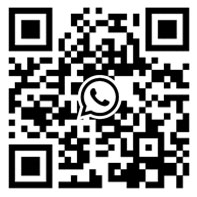Common Problems and Solutions for Ultrasonic Level Meters
Ultrasonic level meters are widely used in industries such as water treatment, chemical storage, and environmental monitoring due to their non-contact measurement, easy installation, and cost-effectiveness. However, like any instrument, they can encounter issues during operation. This article summarizes the most common ultrasonic level meter problems, their causes, and practical solutions to help ensure accurate and reliable measurements.
1. Sensor Not Working
Symptoms: No display or no signal output.
Possible Causes:
-
Power supply is disconnected or polarity is reversed.
-
Input voltage is outside the required range.
Solutions:
-
Check the wiring connections.
-
Ensure a stable 12–24V DC power source.
-
If the issue persists, contact the manufacturer for service.
2. Fluctuating or Frozen Readings
Symptoms: Measured values jump randomly or remain unchanged.
Possible Causes:
-
Sensor is tilted or not aligned properly.
-
Pulse strength is set incorrectly.
-
Electromagnetic interference from nearby devices.
-
Debris or foam on the liquid surface.
Solutions:
-
Reinstall the probe vertically.
-
Adjust the pulse strength (e.g., for 1–3m range, set to level 2–5).
-
Use shielded cables and isolate from interference.
-
Clean the surface of the liquid.
Explore Installation Guide for Ultrasonic Level Meters
3. Blind Zone or Overrange Alarm
Symptoms: Display shows “out of range” or blind zone error.
Possible Causes:
-
Actual tank level exceeds the meter’s measurement range.
-
Harsh environments like high dust or vapor.
Solutions:
-
Check and reconfigure the measurement range.
-
Reduce blind zone by switching to short-blind-zone models.
-
Optimize the application environment (e.g., install a filter or cover).
4. Abnormal 4–20mA Output
Symptoms: Output current is unstable or inaccurate.
Possible Causes:
-
Load resistance is too high.
-
Parameters were modified unintentionally.
-
Power supply is not well filtered.
Solutions:
-
Reduce the load resistance.
-
Recalibrate or reset parameters.
-
Use a regulated power supply with good filtering.
5. Control Output Failure
Symptoms: Control relay does not activate as expected.
Possible Causes:
-
Incorrect parameter settings.
-
Improper current limiting resistor value.
Solutions:
-
Reset the control output settings.
-
Adjust the limiting resistor to match the control circuit.
6. Communication Failure
Symptoms: RS485 or serial port communication not working.
Possible Causes:
-
Incorrect wiring.
-
Baud rate or protocol mismatch.
Solutions:
-
Double-check wiring and ensure proper grounding.
-
Align communication settings with the host system.
7. High Measurement Error
Symptoms: Displayed value differs from actual level by more than 10cm.
Possible Causes:
-
Probe not installed vertically.
-
Sensor too close to the tank wall.
-
Temperature compensation not configured.
Solutions:
-
Reinstall the sensor vertically and away from tank walls.
-
Input correct installation height.
-
Enable temperature correction in the settings.
8. Environmental Interference
Symptoms: Measurement affected by steam, bubbles, or foam.
Possible Causes:
-
Signal attenuation due to vapor or surface disturbance.
Solutions:
-
Add a protective cover or reflection plate.
-
Choose an anti-interference ultrasonic sensor.
-
For severe interference, consider switching to a radar level meter.
9. Installation Issues
Symptoms: No reading or erratic signals.
Possible Causes:
-
Sensor is installed within the blind zone.
-
Probe is tilted or installed at incorrect distance.
Solutions:
-
Maintain minimum blind zone clearance.
-
Strictly install the probe perpendicularly to the liquid surface.
-
Regularly inspect installation height and alignment.
10. Electromagnetic Interference
Symptoms: Unstable or drifting readings.
Possible Causes:
-
Electrical noise from pumps, motors, or VFDs.
Solutions:
-
Use anti-interference models.
-
Keep sensors away from high-noise sources.
-
Use shielded cables and proper grounding.
Conclusion
Ultrasonic level meter issues are typically caused by improper installation, environmental interference, or incorrect parameter settings. Understanding these problems and applying targeted solutions ensures reliable operation. In more challenging environments—such as those with heavy dust, foam, or vapor—upgrading to radar level meters or using accessories like waveguides or shields may be more effective. Routine maintenance and calibration are also essential for long-term accuracy.
For more detailed guidance on Aister Product Catalogue or selecting the right flow meter for your application, Click for help.
- Why is the thermal gas mass flowmeter not affected by pressure strength and temperature?
- What to do when a thermal gas mass flow meter fails?
- How are thermal gas mass flow meters used? What are the applications?
- Under what circumstances is the gas measurement need to be regulated compensated vortex flowmeter
- Why Is The Aister Thermal Gas Mass Flowmeter So Popular ?
- Gas turbine flowmeter manufacturers explain their main advantages in measurement
- Gas turbine flowmeter manufacturer Aister instrument field experience summary
- Aister Instrument Empowerment Conference








